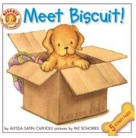Lori Sabo
Remember that time when I thought it would be easy to make a Lego cake for my grandson's birthday? Oh, that's right. You weren't there. Had you been there, you would have interceded and encouraged me not to be deceived into thinking that I could re-create a cake resembling the ones that served as inspiration. But like I said, you weren't there. So I thought, Cut a cake into shapes, frost them, and use Oreos or marshmallows for the dots on top—easy peasy.
.png)
My four- and five-year-old helpers and I experienced initial success when we cut the 9-by-13-inch cake into four perfect Lego shapes. Our optimism continued as we made a batch of frosting and tinted it four delightfully rich Lego hues.
Then things began to go downhill. Starting with the yellow, I attempted to frost a crumb coat (a thin layer of frosting that is supposed to seal in stray crumbs before a second layer of frosting is applied), which instead of covering beautifully, scraped and dragged blobby, brown cake crumbs throughout the sunny yellow. We had only enough frosting left to coat one Oreo, which ended up looking like . . . a frosted Oreo, and nothing like a Lego bump.
It was then that I knew we needed to abort Plan A. "Boys, let's just frost the cakes and make them look awesome by adding some Lego-shaped candies and candles. How would you like to do that?"
An enthusiastic "Yes!" was heard throughout the kitchen, and a cake that deserved to be submitted to Pinterest Fails (Where Good Intentions Come to Die) was born.

Did my cake catastrophe lead to classroom connections? Indeed.
Approximations—Despite best intentions, my cake didn't look like the goal, but it did match my level of skill and expertise. Similarly, student approximations toward a target may not match a strategy I model or the standards set before them, but their efforts and approximations toward a target are worth celebrating.
Plan Bs—Plan As are great, but Plan Bs can have just as much merit. How often do our well-planned lessons veer in another direction based on student engagement, ability, and need? (I am reminded of the great classroom snowstorm of 2011.) By being sensitive to how things are going, and adjusting accordingly, Plan Bs in the classroom don't need to represent failure, but can be a positive responsiveness to the situation.
Cake Foibles—This cake may qualify as an amusing Pinterest Fail, but it isn't a cake fail. The birthday boy loved it, and when he and his brother took over the process, they enjoyed complete ownership of the outcome. Likewise, when our students are the ones who do most of the work, they will learn the most and develop pride in a job that is done to the best of their abilities.
It's a new kind of ABCs (Approximations, Plan Bs, and Cake Foibles), and I hope they brought you a smile and some encouragement today.
News from The Daily CAFE
 Strategic Success . . .
Strategic Success . . .
Building Fluency and Expression in Older, Struggling Reader
Here’s an idea that really works to help struggling readers practice with books that are considerably easier than those their peers are reading.
 And the research says . . .
And the research says . . .
Opportunity to Read
With all we have to accomplish in the limited time of a school day, how can we increase our students’ reading volume?
 What’s the Purpose? . . .
What’s the Purpose? . . .
Adjusting Student Goals Based on Current Assessments*
Here are four important things to remember when using your assessments to inform instruction.
 Focus on Health . . .
Focus on Health . . .
Welcome the Butterflies
Whether in nature or in our stomachs, perhaps we should embrace the presence of butterflies.





